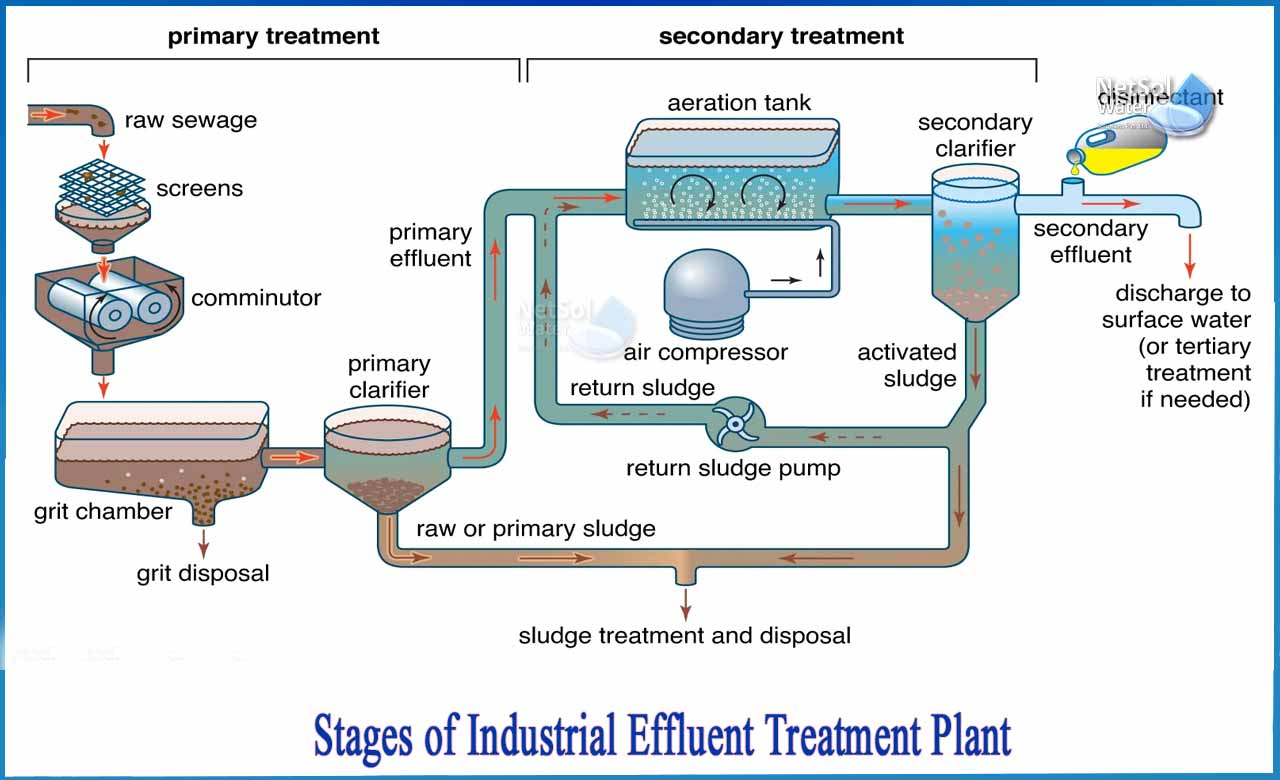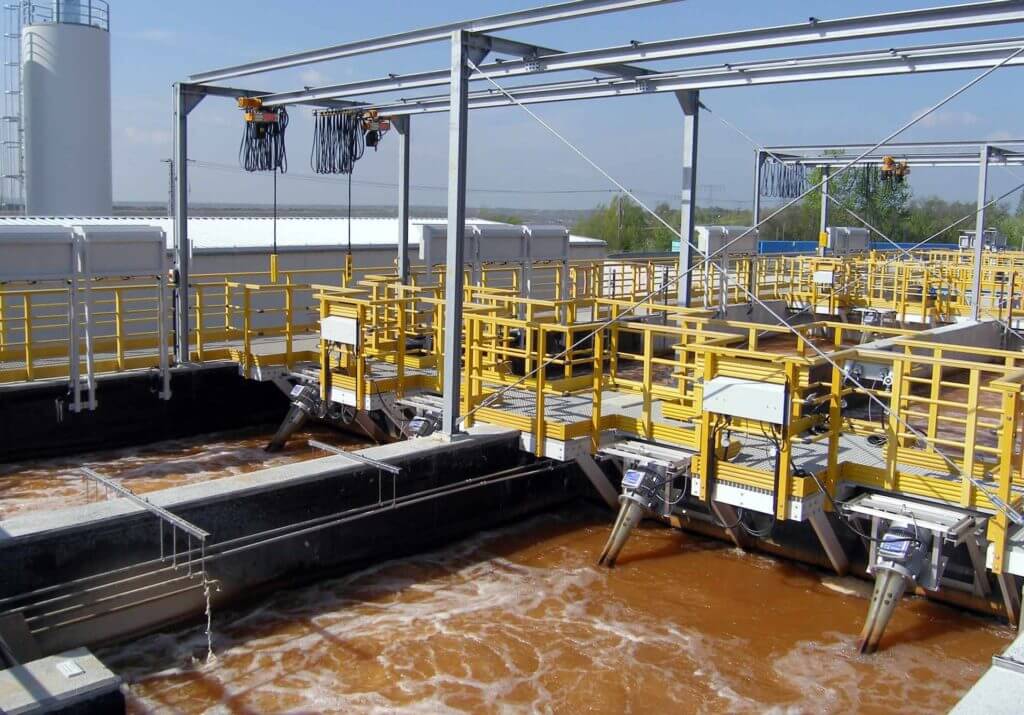Industrial Waste Water Treatment-- Cutting-Edge Technologies for Water Filtration
Industrial Waste Water Treatment-- Cutting-Edge Technologies for Water Filtration
Blog Article
Difficulties and Solutions in Industrial Waste Water Therapy
The therapy of commercial wastewater presents a multifaceted variety of difficulties, varying from stringent regulatory compliance to the intricacies of price administration and technical restrictions. The variability in waste make-up even more makes complex the performance of standard therapy techniques, usually resulting in risen operational expenditures.
Regulatory Compliance Obstacles
Exactly how can industrial centers navigate the complicated landscape of governing compliance in wastewater therapy? The regulatory structure regulating wastewater monitoring is complex, frequently differing by territory and type of market.
To properly manage these conformity challenges, centers need to implement robust tracking and reporting systems that make certain real-time data collection and analysis. Regular audits and danger evaluations can determine possible compliance voids, enabling aggressive modifications in therapy procedures. Worker training programs concentrating on regulatory understanding and ideal techniques are necessary to promote a society of compliance within the organization.
In addition, engaging with regulatory agencies can supply useful insights and clear up ambiguous guidelines. Facilities might likewise benefit from speaking with environmental professionals that concentrate on wastewater treatment compliance, guaranteeing that they stay abreast of developing guidelines. By taking on these approaches, commercial facilities can not just meet conformity needs however likewise enhance their operational efficiency and ecological stewardship.
Price and Economic Barriers
Navigating regulative conformity in wastewater treatment usually offers substantial financial challenges for commercial centers. The prices connected with carrying out required treatment modern technologies, keeping conformity with strict policies, and handling functional expenditures can be intimidating. Numerous organizations encounter high first capital investment for the building and construction or upgrading of wastewater treatment plants, which may strain budget plans, particularly for medium-sized and little business.
Additionally, ongoing operational prices, including maintenance, labor, and chemical inputs, add to the financial concern. The changability of varying power rates and the prospective need for additional financial investments to satisfy progressing regulations worsen these financial pressures. In a lot of cases, the lack of financial incentives or support from government bodies makes it much more difficult for companies to warrant financial investments in sophisticated therapy systems.
Additionally, the financial feasibility of wastewater therapy solutions is usually examined, particularly for sectors with tight profit margins. For that reason, it is vital for industrial centers to check out economical approaches, such as taking on cutting-edge funding alternatives, involving in partnerships, and leveraging emerging technologies that can assist reduce these economic barriers while guaranteeing compliance with environmental standards.

Technical Limitations
Numerous technical limitations prevent the efficiency of industrial wastewater treatment procedures. One considerable difficulty is the insufficiency of existing treatment innovations to attend to complex contaminants.
Furthermore, the scalability of therapy modern technologies poses a challenge. While some advanced approaches, like membrane filtration or advanced oxidation, show promise in regulated atmospheres, their implementation on a larger scale can be practically challenging and much too pricey. Maintenance and operational intricacies even more make complex the adoption of these systems, especially for smaller sized industries with limited technical know-how.
The assimilation of real-time tracking innovations also continues to be insufficient in several treatment facilities. Without effective tracking systems, operators can not appropriately analyze treatment effectiveness or find possible failures, bring about irregular effluent quality. Subsequently, resolving these technological constraints through r & d, alongside financial investment in innovative solutions, is critical for enhancing the effectiveness of industrial wastewater treatment and ensuring regulative conformity. Industrial Waste Water Treatment.
Variability in Waste Make-up
In the realm of commercial wastewater treatment, the variability in waste structure offers an awesome challenge. Industries generate wastewater with diverse characteristics, influenced by aspects such as manufacturing processes, resources, and functional techniques. This heterogeneity makes complex the treatment process, as standard systems often struggle to efficiently resolve the wide range of pollutants existing.
As an example, wastewater from food handling may have high levels of organic matter, while effluents from chemical manufacturing might consist of heavy metals and dangerous compounds. This variation demands versatile treatment techniques to make certain conformity with environmental policies and protect public health and wellness. Additionally, changes in waste structure can take place gradually, affected by modifications in manufacturing timetables, maintenance tasks, or the introduction of new products.

Ingenious Therapy Solutions
Ingenious treatment remedies are essential for attending to the intricacies of industrial wastewater monitoring. Typical methods commonly drop short in effectively eliminating a vast variety of contaminants, particularly in facilities with varied effluent streams. Recent advancements concentrate on integrating sophisticated modern technologies to boost therapy efficiency and sustainability.
One encouraging strategy is making anchor use of innovative oxidation procedures (AOPs), which take advantage of effective oxidants to break down natural contaminants. AOPs, consisting of photocatalysis and ozonation, can significantly lower harmful compounds and improve effluent top quality. In addition, membrane bioreactor (MBR) innovation has actually gotten grip, integrating biological treatment with membrane filtering, leading to premium effluent and decreased footprint.
One more ingenious option is the execution of resource recovery systems. Techniques like anaerobic digestion not only treat wastewater but additionally produce biogas, which can be harnessed site as an eco-friendly energy resource. In addition, the fostering of artificial intelligence and artificial intelligence models can enhance therapy processes by predicting variants in wastewater make-up, thereby boosting operational efficiency.
These cutting-edge services not only address regulatory conformity yet likewise promote ecological sustainability, paving the means for an extra efficient and resilient industrial ecological community.
Conclusion
In final thought, attending to the obstacles of industrial wastewater treatment calls for a diverse strategy that integrates regulatory conformity, price administration, and technological advancements. A commitment to continual improvement in therapy approaches will ultimately contribute to the efficient monitoring of industrial wastewater and environmental protection.
The treatment of commercial wastewater presents a diverse array of obstacles, ranging from stringent regulatory compliance to the complexities of price monitoring and technological restrictions. Industrial Waste Water Treatment.Browsing regulatory compliance in wastewater therapy typically offers significant economic difficulties for industrial facilities. Addressing these technical restrictions through research study and development, alongside investment in cutting-edge remedies, is important for improving the efficiency of commercial wastewater therapy and guaranteeing regulative conformity
Wastewater treatment centers must spend in durable monitoring systems and versatile treatment technologies my sources capable of accommodating differing influent characteristics.In final thought, dealing with the obstacles of commercial wastewater treatment calls for a complex approach that incorporates regulative conformity, cost management, and technical innovations.
Report this page